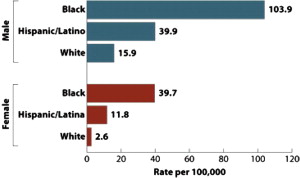Human immunodeficiency virus (HIV) and hepatitis C virus (HCV) are 2 systemic infectious diseases that dental health care professionals can help identify with the goal of improving health outcomes, addressing health disparities, and improving the quality and quantity of life. Whether by identifying suspect oral lesions, as is the case with HIV infection, or offering rapid screening tests in the dental setting for both HIV and HCV, the dental team can play an important role in linkage to confirmatory diagnosis and care.
- •
Human immunodeficiency virus (HIV) and hepatitis C virus (HCV) are 2 systemic infectious diseases that dental health care professionals can help identify with the goal of improving health outcomes, addressing health disparities, and improving the quality and quantity of life.
- •
By identifying suspect oral lesions, as is the case with HIV infection, or offering rapid screening tests in the dental setting for both HIV and HCV, the dental team can play an important role in linkage to confirmatory diagnosis and care.
Human immunodeficiency virus in the United States
The Centers for Disease Control and Prevention (CDC) estimates that there are 1.2 million people living with human immunodeficiency virus (HIV) infection in the United States. Latest estimations indicate that about 50,000 Americans become infected with HIV annually, and this number remained stable between 2006 and 2010. Approximately 20% of those living with HIV infection are unaware of their status. Even with advances in rapid HIV diagnostics and medical treatments to manage this disease, approximately 33% of persons diagnosed with HIV in 2008 developed acquired immune deficiency syndrome (AIDS) within 1 year of diagnosis. In the United States alone, more than 16,000 people with AIDS were estimated to have died in 2008, and nearly 594,500 people have died since the epidemic began.
African Americans and Hispanics/Latinos are the racial/ethnic groups most affected by HIV. African Americans represent approximately 14% of the United States population, but accounted for 44% of all new HIV infections in 2010. Hispanic/Latinos represent approximately 16% of the total United States population, yet accounted for 20% of all new HIV infections in 2009 ( Fig. 1 ). Overall, in 2009 African American men had the highest rate of new HIV infections (103.9 per 100,000), followed by Hispanic/Latino men (39.9 per 100,000), and African American women (39.7 per 100,000).





